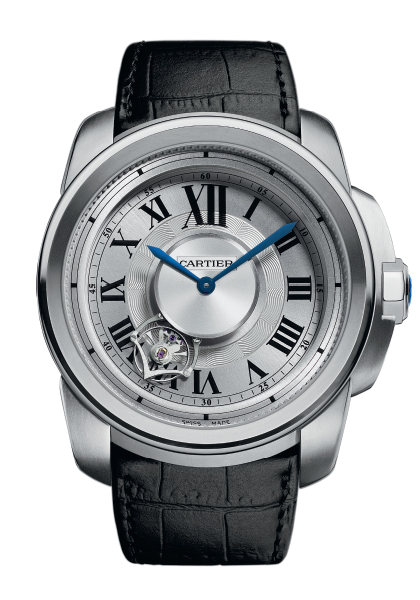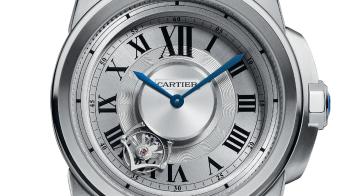When Cartier unveiled its first Astrotourbillon watch in 2010, it was hailed as a true advancement – one that had watch lovers mesmerised.
Around the year 2008, the house of Cartier made a purposeful investment into serious watchmaking. The brand developed an entire department dedicated to Haute Horlogerie and complicated movements. One of its first releases was the dramatically different Astrotourbillon, unveiled to the world in 2010. Heretofore, tourbillon escapements were pretty much visible on watch dials via an aperture that showed the cage generally placed at 6 o’clock. The tourbillon accomplished its role – to compensate for errors in timekeeping due to the effects of gravity on the watch when it was in certain positions on the wrist – by constantly rotating around its own axis in that aperture. This made the watch visually arresting.
Cartier took the tourbillon cage, moved it away from a singular spot on the watch and converted it into a constantly rotating cage that holds the balance and also rotates around the watch dial. In brief, Cartier elevated the tourbillon escapement from its purely functional role by making it aesthetically alluring as well. The 9451 MC Astrotourbillon calibre with its 187 parts was actually five years in the making and was hailed as a new standard for watchmaking complications. The complex Astrotourbillon boasted a balance that, while still rotating on its own axis, had a cage that could complete a rotation around the dial once every minute, thereby also acting as a seconds hand. It quickly became a watch collector’s dream thanks to the carefully orchestrated dance on the dial.

Five years later, in 2015 after having spent six years in the development since that first version, Cartier released an even more visually stunning model in the form of the Astrotourbillon Skeleton watch. Sandwiched between two sapphire crystals, the manual-winding 9461 MC movement was even more alluring. It was entirely reduced to the barest minimum to showcase the important movement parts and to create the illusion that it was floating in space. In reality, the movement structure was anchored by the skeletonised bridges that formed the Roman numerals XII and VI on the dial. As it rotates around the dial, the wearer (and others) get an unimpeded view of its movement. While the first version with a classical dial was already coveted, this new majestic, skeletonised timepiece with an outer dial ring had collectors clamoring. Just 100 pieces of that 47mm watch were made.
In 2021, Cartier released a new version of the Rotonde de Cartier Astrotourbillon. This one houses the famed 9461 MC skeletonised movement but is created in platinum with a beaded crown set with an aventurine cabochon. It features a slate gray dial ring with silver-hued numerals. The tourbillon cage is (like the 2010 version) raised and positioned above the movement for great multi-dimensional layers. This strictly limited five-piece edition is sure to make waves among Cartier fine watchmaking collectors and remain sought-after on the preowned market for years to come.
*This year GMT Magazine and WorldTempus have embarked on the ambitious project of summarising the last 20 years of the Tourbillon in The Millennium Watch Book - Tourbillons, a big, beautifully laid out coffee table book. This article is an extract. The Millennium Watch Book - Tourbillons is available on www.the-watch-book.com, in French and English.







